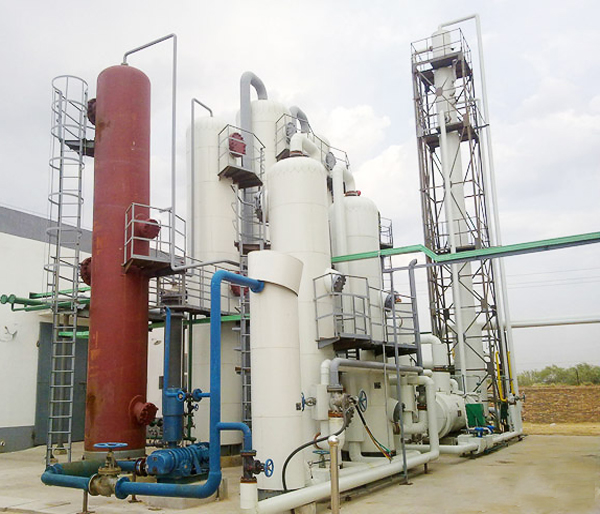 2018-02-02
2018-02-02  753
753
Food carbon dioxide is mainly used for the production of carbonated beverages and beer, as well as for food preservation, swelling agents, loosening agents and the like.

The sources of carbon dioxide are extensive. At present, those in production scale are as follows: tail gas from fermentation, decarbonization gas from synthetic ammonia, lime kiln gas, underground waterfall well gas, and hydrocarbon decarbonization gas. Food additive carbon dioxide is a direct-to-eat industrial product, and its quality is vital for human health. To ensure product quality and use effect, the demand for CO2 gas is also getting increasingly higher. China's new standards in the field of testing and quality monitoring of the quality of food additive carbon dioxide stipulate that the sulfur content shall be ≤1.0×10-6V/V. However, when sulfides (such as H2S, COS, CS2, etc.) are being removed in CO2, due to the competitive adsorption, the desulfurization effect of the catalyst is greatly restricted, so desulfurization has been a major problem in the production of food CO2. At present, there are many methods for desulfurization of high-concentration CO2 gas in China. Generally, they are selected based on the source of CO2, impurity components, treatment amount, H2S content, and use requirements. From an economical point of view, when the H2S concentration in the CO2 gas is high, the wet desulfurization is generally adopted. When the H2S concentration in the gas is low, dry desulfurization is generally adopted. The types of dry desulfurizers are classified into ordinary desulfurizers and fine desulfurizers based on the precision of their desulfurization, and there are many industrially used high-purity zinc oxide desulfurizer, zinc oxide + manganese oxide desulfurizer, active iron oxide desulfurizer, and activated carbon desulfurizer, and impregnated high-precision desulfurizer.
 Current location:Home - Business Scope - Area of application
Current location:Home - Business Scope - Area of application
- Previous

-
shift gas
2018-02-02

 Sales hot-line:0816-3736605
Sales hot-line:0816-3736605 E-mail:jysongwei@126.com
E-mail:jysongwei@126.com Address:No. 772, Laojun Road, Jiangyou, Sichuan
Address:No. 772, Laojun Road, Jiangyou, Sichuan

 QQ
QQ Tel
Tel Message
Message Share
Share Top
Top